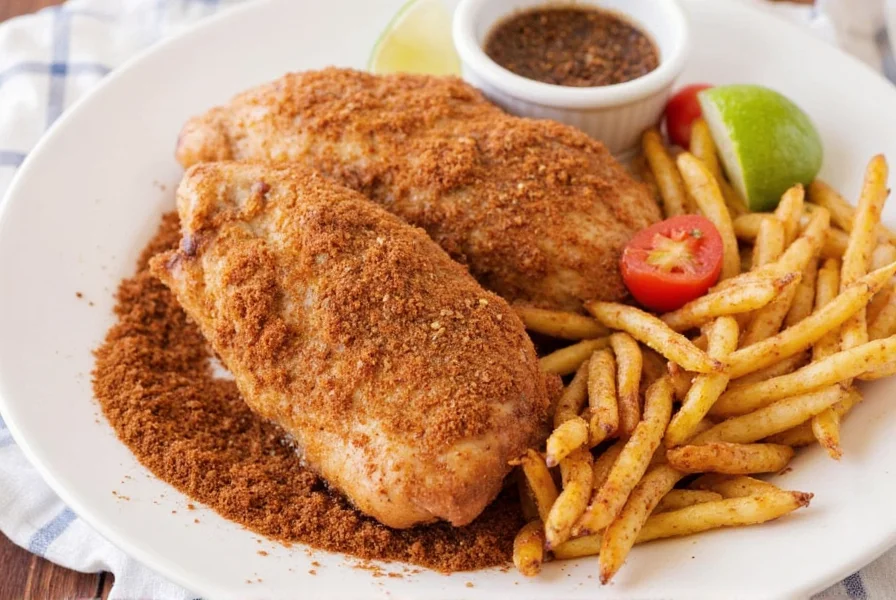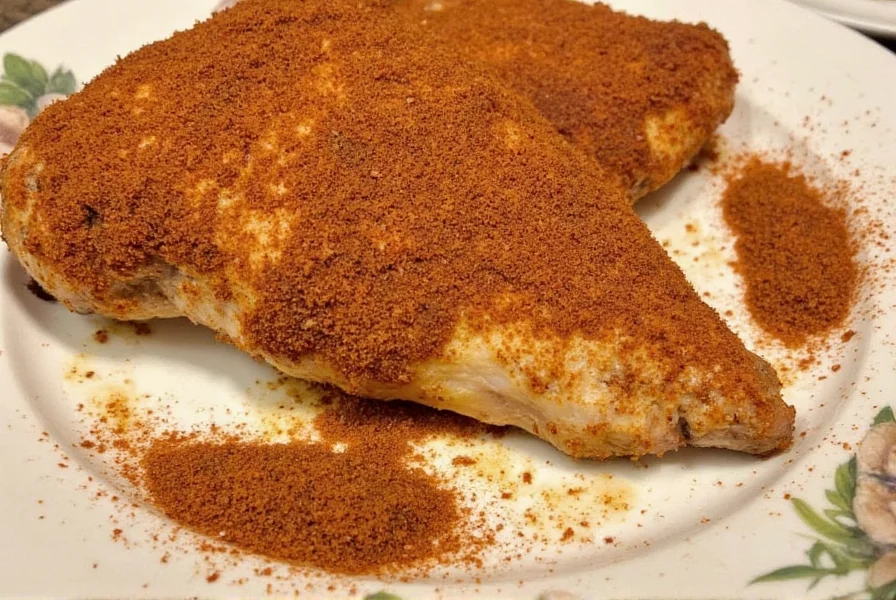Table of Contents
Introduction to Cajun Chicken Seasoning
Cajun chicken seasoning is a signature dry spice blend originating from Louisiana, typically composed of paprika, cayenne pepper, garlic powder, onion powder, black pepper, and herbs like thyme or oregano. It delivers a smoky, spicy, and slightly sweet flavor profile, making it ideal for chicken, seafood, and vegetables. This guide covers everything you need to know, from its historical roots to expert usage tips and buying recommendations.
The Flavor Profile of Cajun Chicken Seasoning
To truly appreciate cajun chicken seasoning, it helps to understand its core components and typical ratios for an authentic blend:

- Paprika: 2 parts (sweet, smoky base)
- Cayenne Pepper: 1 part (signature heat)
- Garlic Powder: 1 part (depth and umami)
- Onion Powder: 1 part (savory foundation)
- Black Pepper: 1/2 part (enhances spice profile)
- Herbs (Thyme/Oregano): Optional, 1/4 part (earthy note)
The combination creates a balanced flavor that works well with both mild and bold dishes. While commonly used for chicken, cajun seasoning isn't limited to poultry—try it on shrimp, vegetables, or roasted potatoes for a flavor-packed twist.
Global Spice Traditions and Cajun Roots
Cajun seasoning reflects a fusion of French, Spanish, African, and Native American influences from Louisiana's culinary history. Its ingredients mirror global spice traditions: paprika and cayenne pepper align with Spanish and Mexican cuisine, while garlic and onion powders echo French and Italian techniques. This cross-cultural foundation makes it versatile for classic gumbo or modern fusion dishes.
5 Practical Tips for Using Cajun Chicken Seasoning
- Use it generously: Cajun seasoning is meant to be bold. Apply 1-2 tablespoons per pound of chicken for optimal flavor penetration.
- Pair with acidic ingredients: Balance richness with citrus, vinegar, or tomatoes—ideal for lemon-garlic chicken or tangy cajun slaw.
- Make your own blend: Customize heat levels by adjusting cayenne: 1/4 tsp per 1/4 cup base for mild, 1/2 tsp for medium, 1 tsp+ for extra spicy.
- Experiment with textures: Use as a dry rub for grilled chicken, mix into marinades, or sprinkle on roasted vegetables for crispy edges.
- Don't forget the sides: Elevate cornbread, popcorn, or rice dishes with a sprinkle for consistent flavor throughout your meal.

| Product | Features | Best For |
|---|---|---|
| Tony Chachere's Original Creole Seasoning | Classic blend with balanced heat and smoky flavor | Grilled chicken, seafood, and stews |
| Zatarain's Cajun Seasoning | Rich and bold, with a slight sweetness | Roasted meats, vegetables, and rice dishes |
| Simply Organic Cajun Seasoning | Organic, non-GMO, and free from artificial ingredients | Health-conscious cooks and natural option seekers |
Frequently Asked Questions
What are the essential spices in authentic Cajun chicken seasoning?
Authentic Cajun chicken seasoning typically includes paprika (2 parts for smoky sweetness), cayenne pepper (1 part for heat), garlic powder (1 part), onion powder (1 part), black pepper (1/2 part), and optional herbs like thyme or oregano (1/4 part). Unlike Creole seasoning, traditional Cajun blends are salt-free, allowing you to control sodium levels.
How can I adjust the heat level of Cajun chicken seasoning to my preference?
Customize heat by adjusting cayenne pepper: 1/4 tsp per 1/4 cup base for mild, 1/2 tsp for medium, and 1 tsp+ for extra spicy. Let seasoned dishes rest for 30 minutes before cooking—heat intensifies slightly during resting time.
What's the difference between Cajun and Creole seasoning?
Cajun seasoning is simpler, originating from rural Acadiana, with paprika, cayenne, garlic, and black pepper—typically salt-free. Creole seasoning has French/Spanish influences with more herbs (oregano, thyme) and often includes salt. Cajun is spicier and rustic, while Creole is herb-forward and refined.
How much Cajun seasoning should I use per pound of chicken?
Use 1-2 tablespoons per pound of chicken. Start with 1 tablespoon for beginners, then adjust to taste. For dry rubs, massage thoroughly into the chicken (including under skin) and let rest 30 minutes to overnight for maximum flavor penetration.
What cooking methods work best for Cajun-seasoned chicken?
Cajun seasoning shines with high-heat methods: 1) Cast-iron skillet (perfect sear), 2) Grill (adds smoky dimension), 3) Broiling (quick crispy skin), and 4) Air frying (healthier texture). Avoid boiling or steaming—pat chicken dry before seasoning to ensure adhesion and browning.
Conclusion
Cajun chicken seasoning is more than a spice—it's a gateway to Louisiana's rich culinary heritage. From its precise ingredient ratios to versatile applications, this blend transforms simple dishes into bold, flavorful experiences.

Whether you're grilling, roasting, or experimenting with fusion recipes, mastering cajun seasoning unlocks endless possibilities. Start with the right blend, apply these expert tips, and savor the authentic Southern spice in every bite.











 浙公网安备
33010002000092号
浙公网安备
33010002000092号 浙B2-20120091-4
浙B2-20120091-4